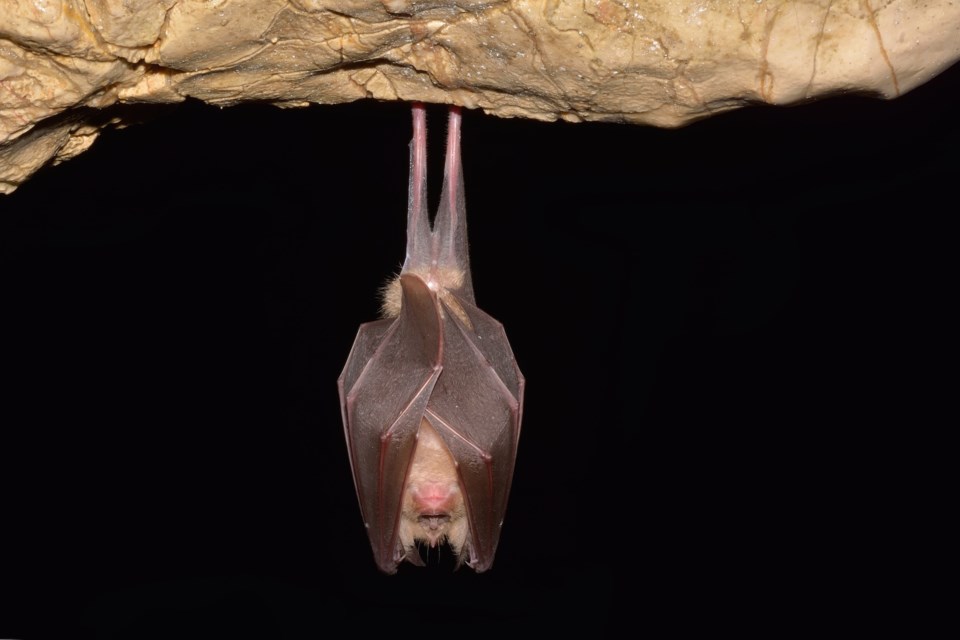This article, written by Livia O. Loureiro, University of Toronto, originally appeared on The Conversation and has been republished here with permission:
One of the first questions scientists ask when a new disease appears is, “Where did this come from?”
Many viruses jump from animals to humans, a phenomenon known as “zoonotic spillover.” Although it remains unclear which animal was the source of the current coronavirus pandemic, all the attention is on bats.
The transmission of viruses from bats to humans is not just a matter of a bat biting someone or licking their blood. (Bats do not suck blood as they do in vampire stories.) It is often a much more complex scenario that may involve an intermediary host.
Many other animals are also known to be repositories for human diseases. Rodents carry the plague, pigs transmit influenza and birds transport the West Nile virus. So, why are bats so often blamed for transmitting disease?
As a scientist who has spent years studying the evolution of bats in several countries in South America, North America and the Caribbean, I think that these night creatures are often the victims of misinformation. Most people are afraid of bats, and there is a tendency to connect them to bad things.
Heating up
One reason bats are blamed for disease has nothing to do with science. Bats are associated with vampires and horror stories, which causes fear and misunderstanding towards these flying creatures.
The other reasons are grounded in evidence. Bats are the second-most species-rich order of mammals. There are more than 1,400 species distributed worldwide, except in Antarctica. They live in urban and natural areas, and they all have the potential to carry viruses. Bats are also mammals, and this relatedness to humans makes them more likely to be hosts of zoonoses than birds and reptiles, for example.
Some bat species prefer to live in colonies, close to one another, creating a perfect setting for pathogens to spread between each other — and to other species who might also share the space. Bats are also the only mammals capable of true flight, making it easier for them to spread diseases through their guano (bat feces).
But what is particularly interesting is their tolerance to viruses, which exceeds that of other mammals. When bats fly, they release a great amount of energy, which increases their body temperature to 38–41 C. The pathogens that have evolved in bats are able to withstand these high temperatures. This poses a problem for humans because our immune system has evolved to use high temperatures — in the form of fevers — as a way to disable pathogens.
Seed dispersers
Despite all the negative press bats receive, they make positive contributions to the environment and to our lives.
The majority of species feed on insects, helping protect crops from infestations. They are involved in seed dispersal, such as those from fig trees and silver palms, and the pollination of many plants, including several commercial ones, such as the eucalyptus and agave, which provide natural fibres and beverages, such as tequila and mescal.
Bats have also been used in scientific research to understand adaptive evolution (how beneficial mutations become common in a population) and how ecosystems function. They have also be used in studies on aging, cancer, immunity and biomimetic engineering.
And most importantly, bats might actually help to provide the solution for COVID-19 and other viruses. Bats do not get sick from many viruses that might kill humans, and research on how bats achieve this could hold the key to help us fight this and future outbreaks.
‘Bad reputation?’
It is clear that researchers around the world are doing whatever they can to report the origin of SARS-CoV-2. So far, the most accepted hypothesis is that the novel coronavirus originated in bats. The genome of the virus found in humans is 96 per cent identical to one found in bats. But are these findings being reported the way they should?
Not always, from the bat’s perspective, at least.
Complex scientific studies are being published very fast, which is understandable considering the urgency of this new disease. However, this hastiness is leading to mistrust, confusion and sometimes even fear and hatred towards these flying mammals.
In some places, this growing “bad reputation” has led to the intentional and needless killing of bats in the name of protecting public health. But this could have negative consequences: disturbing hibernating bats causes abnormal arousal and stress, which could lead to the spread of new diseases.
But even if bats are proven to be the source of this virus, they are not to blame for the transfer of SARS-CoV-2 — humans are. We destroy natural habitats at a frenetic speed; we kill threatened species, changing entire food chains; we pollute the air, the water and the soil.
It is expected that new pathogens that were previously locked away in nature will come in contact with people and spread fast as people move around the world. The people who blame bats for COVID-19 should look in the mirror to see if the real vampire resides within.![]()
Livia O. Loureiro, Research Fellow, The Cente for Applied Genomics — Sickkids Hospital, University of Toronto
This article is republished from The Conversation under a Creative Commons license. Read the original article.



